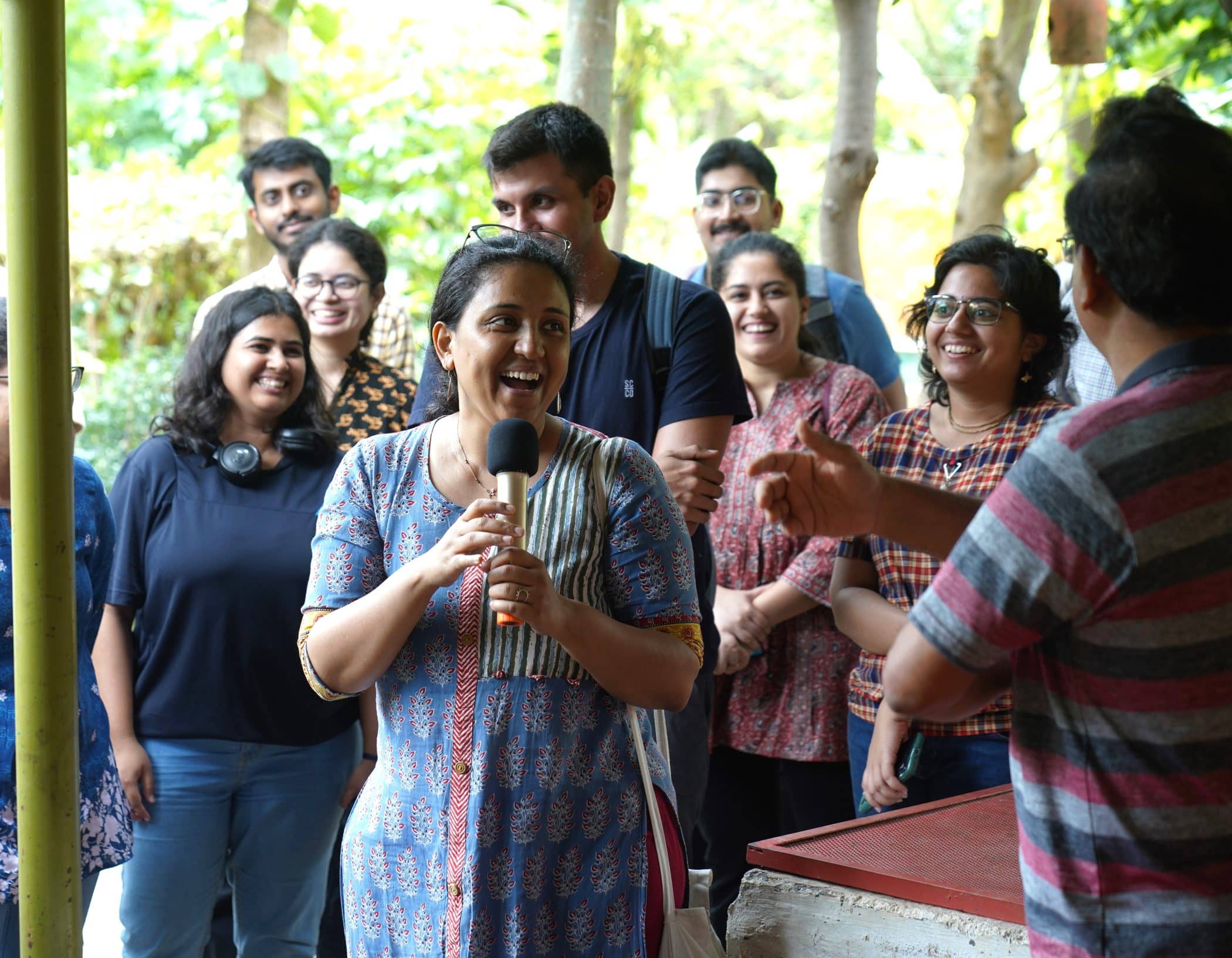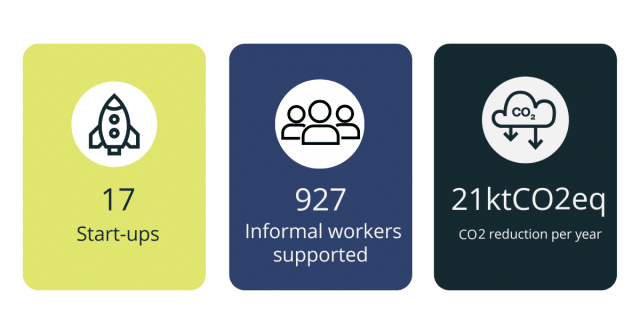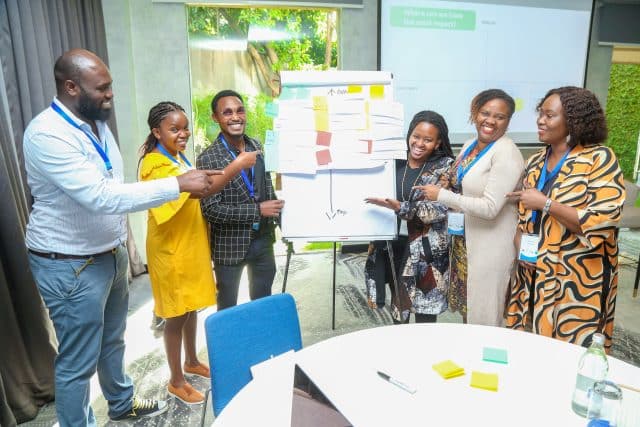Creating pathways to upstream solutions through Circular Economy Innovation Clusters

Having explored the economic and environmental potential of upstream innovation in the previous article, we now turn to practical implementation.
Upstream innovation focuses on preventing waste from being created rather than managing it post-use. Though this sounds straightforward, implementing this approach requires coordinated action across diverse sectors and stakeholders. A pathway to implementing this approach lies in innovation clusters: where start-ups, investors, corporates, community-based organisations, entrepreneurship support organisations (ESOs) and policymakers collaborate to create self-sustaining ecosystems.
Climate KIC, along with its partners GrowthAfrica and SecondMuse, is fostering Circular Economy Innovation Clusters in Bengaluru and Nairobi, funded by the IKEA Foundation. These clusters take a place-based approach to solving urban challenges while unlocking economic opportunities.
The clusters are centred on upstream innovation, a focus validated by baseline studies from Yunus Environment Hub and Wasafiri. These studies reveal that downstream waste management in these cities has progressed, but upstream circularity remains largely untapped.
Below, we share key takeaways from how we are navigating these complexities while implementing circular principles within our innovation clusters.
1: Systems thinking enables effective upstream innovation
From our experience, to accelerate systemic thinking, start-ups must integrate circular principles into diverse industries, including material innovation (alternative materials, mono-materials), product design innovation (modular design, durability, minimal packaging), and business model innovation (product-as-a-service, refill & return systems).
How we applied it: Climate KIC incorporated systems thinking into our entrepreneurship support programmes aimed at local start-ups and young innovators. The ClimAccelerator, pre-incubator and Journey programmes, all focused on circular economy principles, helped 68 participants develop circular innovations.
What we know is that start-ups in the circular economy space face scaling challenges due to the need to balance economic goals with social and environmental impact. The Circular Economy ClimAccelerator programmes that we ran in both cities provided tools to measure environmental, social and circular metrics, ensuring alignment among stakeholders.
In 2024, 17 start-ups (ten in Nairobi, seven in Bengaluru) collectively supported 792 informal workers in Nairobi and 135 in Bengaluru. Beyond social inclusion, their innovations advance circularity and hold significant potential for CO₂ reduction of 21 kt CO₂eq/year, equivalent to the emissions saved by six large wind turbines.
By facilitating assessments, we ensure that climate impact is considered across multiple levels, from livelihoods to material flows to emissions reductions, so that investments are directed where they can drive the most meaningful change. This approach helps start-ups articulate their value more clearly from both commercial and impact perspectives. Positive results were witnessed across various categories as 13 of the 17 start-ups improved their social inclusion strategies. These improvements include a broader value chain view on including informal workers, social impact measurement and understanding the relationships between circularity and social inclusion.
2. Effective governance requires both policy frameworks and learning
While shifting mindsets is one of the greatest challenges of the circular economy, policy frameworks can also be a significant barrier. Governments must go beyond allocating funds and actively incentivise private sector investment in upstream solutions. Given waste management’s regulatory complexity, start-ups depend on government policies, making stronger partnerships essential for scaling upstream solutions.
For example, Bengaluru’s Climate Action and Resilience Plan (BCAP) prioritises waste diversion through segregation but still focuses on downstream solutions. Likewise, the government of Karnataka (the state where Bengaluru is located) has committed to India’s first circular economy policy, ensuring that 20 per cent of construction materials are sustainable. However, its focus remains on downstream strategies such as maintenance, reuse, refurbishing and recycling rather than waste prevention.
How we applied it: Policy alone is insufficient without learning and capacity development among those responsible for implementation. In November 2024, Climate KIC hosted a workshop for 17 Nairobi County Environment officers, equipping them with circular economy knowledge and climate change insights. The interactive sessions revealed key learnings:
- Policy integration is crucial: Circular economy strategies need to be embedded into broader climate policies.
- Engagement with youth and informal workers drives change: Community-led initiatives yield better adoption of circular practices.
- Digital platforms enhance impact tracking: Start-ups leveraging digital solutions see greater efficiency in waste management.
“We’ve learned that small actions—educating children about waste segregation, engaging local teams—create ripples of impact,” shared one participant. This direct engagement with local authorities has proven essential for translating circular economy principles into practical actions that respond effectively to community needs and local contexts.
Based on our experiences in both Bengaluru and Nairobi, we’ve identified three critical pathways that enable the shift toward upstream innovation.
Three pathways to upstream innovation: radical collaboration, innovation and learning
A successful transition to upstream innovation requires an unprecedented level of collaboration, learning and systems thinking. Nairobi and Bengaluru, given their rapid urbanisation, have the opportunity to transform waste into economic value. However, policy must go beyond recycling and waste management and prioritise waste elimination at the source.
The lessons from our circular economy innovation clusters demonstrate that success depends on three interconnected pathways:
- driving radical collaboration that shifts mindsets and builds trust between diverse actors
- unlocking impact-driven innovation through enabling conditions for local solutions to scale
- strengthening skills, capacities and learning to address knowledge gaps within the ecosystem
Education, incentives and policy changes can create an environment that fosters these elements, ultimately helping cities pioneer circular solutions that eliminate waste at its source.
This article is part of a series highlighting our learnings and work across the circular economy and waste management and prevention. Our next article delves deeper into the lives of waste pickers.
We welcome requests for further insights on upstream innovation and opportunities for collaboration. We are particularly interested in partnerships that can help scale our impact and drive meaningful progress in this space.


